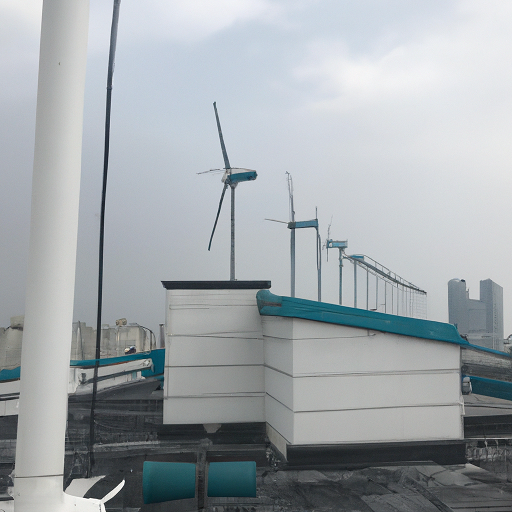Aeromine Technologies has patented a new bladeless wind energy unit in order to compete with the challenge of rooftop solar as a local source of clean energy that can be integrated with the built environment. The company claims that the scalable, “motionless” wind energy unit can produce 50% more energy than rooftop solar at the same cost.
This technology uses aerodynamics similar to airfoils in a race car in order to capture and amplify each building’s airflow. The unit requires about 10% of the space that solar panels would and generates round-the-clock energy. Aeromine stated that, unlike conventional wind turbines that are noisy, visually intrusive, and dangerous to migratory birds, the patented system is motionless and virtually silent.
An Aeromine system is usually comprised of 20 to 40 units installed on the edge of a building that is facing the direction the wind predominantly blows. The company said the unit can reduce the amount of energy storage capacity needed to meet a building’s energy needs, producing energy even in lousy weather conditions. With a modest footprint on the roof, the unit can be joined with rooftop solar, providing a new tool in the toolkit for decarbonization and energy independence.
Almost 50% of all carbon emissions globally come from buildings and the built environment, according to Architecture 2030. Out of that, building operations contribute about 27% of emissions whilst buildings materials and construction, and other construction industry energy use are estimated to account for another 20%. This represents an opportunity for buildings to be made more efficiently, and to adopt innovative technologies to generate emissions-free electricity.
“Our innovative technology is a game-changer that enhances the value of the rapidly expanding rooftop power generation market,” said David Asarnow, CEO of Aeromine. “Aeromine’s technology overcomes challenges posed by traditional spinning wind turbines and less efficient solar panels, making it a highly appealing option for corporations striving to meet their resilience and sustainability goals.”
BASF Corporation is currently testing the Aeromine system at a manufacturing plant in Wyandotte, Michigan. The technology was validated through joint research with Sandia National Laboratories and Texas Tech University.


